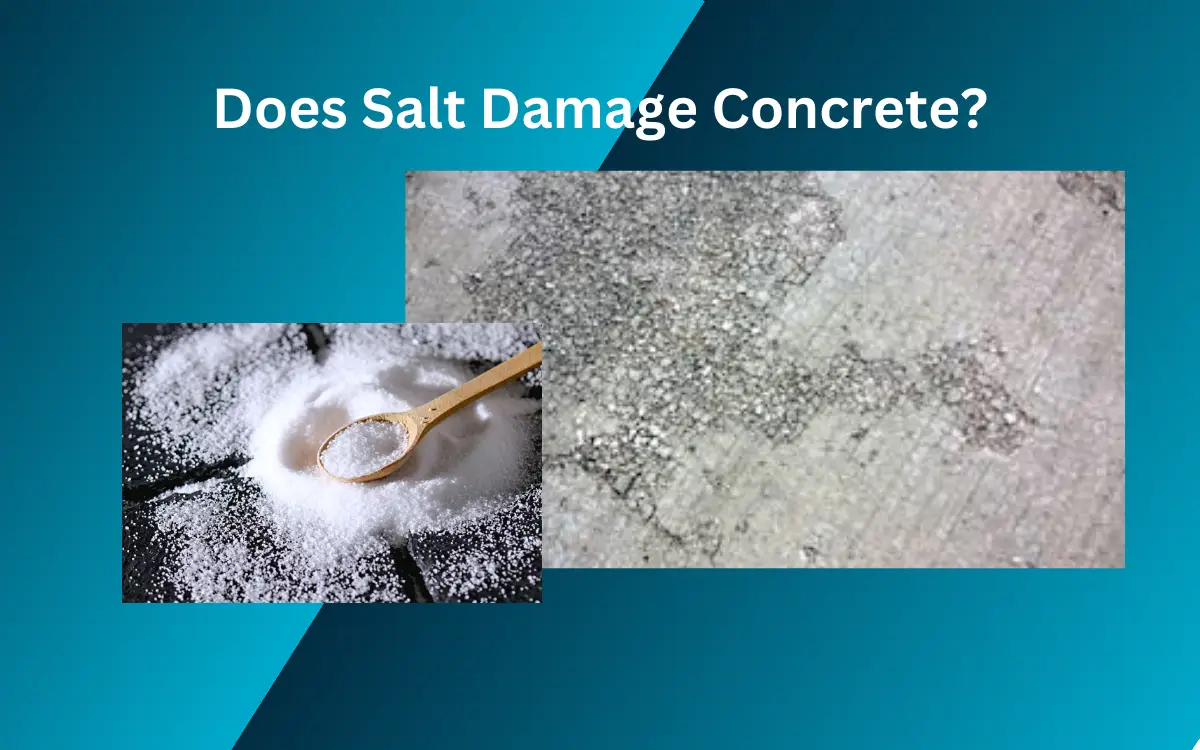Spreading salt is an age-old technique that many people still use today in their efforts to keep sidewalks and driveways safe and clear of ice. But then the critical issue arises: Does Salt Damage Concrete? Is it harmful to concrete in particular? In order to understand the effects of salt on concrete surfaces, this article explores the scientific consensus and expert opinions. The goal is to build trust and ignite excitement about the innovative solutions that are available.
Impact of Salt on Concrete
Science Behind Salt and Concrete Interaction
The fact remains that, in the long run, salt can weaken concrete. Concrete is not directly attacked by salt (sodium chloride), but it is subjected to processes that weaken its structural integrity when the two interact. The porous surface of concrete allows water to soak in when salt is sprinkled on it. The concrete is susceptible to cracking, flaking, and eventually crumbling due to the water’s propensity to undergo freeze-thaw cycles, in which it expands upon freezing and applies internal pressure.
Spotting Signs of Salt Damage
In order to intervene quickly, it is critical to recognize the initial symptoms of concrete salt damage. Scaling, discoloration, and the presence of tiny fissures resembling spiderwebs are some of the telltale signs. The significance of preventive measures and maintenance becomes apparent when these surface issues progress into more serious structural problems over time.
Solutions and Preventive Measures
Preventing Salt Damage on Driveways
Changing to less harmful ways of deicing is the first line of defense against salt damage. For traction that won’t rust like salt, try using non-chemical alternatives like sand or cat litter. Furthermore, to prevent damage from freeze-thaw cycles, high-quality penetrating sealers are applied. This forms a protective barrier that minimizes moisture absorption.
Mitigation of Freeze-Thaw Cycles Damage
One important strategy to combat the negative effects of freeze-thaw cycles is to reduce the use of deicers and to remove excess salt promptly. Reducing the infiltration of salt and water into the pores of concrete preserves its structural integrity, which in turn extends its lifespan and keeps its aesthetic appeal.
Role of Concrete Quality and Installation
Quality and accuracy of installation have a major impact on concrete’s resilience to salt damage. Improved durability and resistance to salt damage are hallmarks of high-quality concrete, which is defined by a low water-to-cement ratio and extensive curing. This highlights the significance of following best practices during installation in addition to selecting appropriate materials.
Alternatives to Salt for Ice Melt
The need to preserve concrete surfaces while guaranteeing pedestrian safety is what motivates the search for alternatives to conventional salt for deicing. Alternatives to sodium chloride that are less corrosive include potassium chloride and calcium magnesium acetate (CMA). Instead of using aggressive chemical interactions, which worsen the damage that the freeze-thaw cycle does to concrete, these alternatives work just as well to melt ice.
Concrete Durability Against Salt
The best way to prevent concrete from being damaged by salt is to invest in its durability from the beginning. Choosing concrete mixes that can endure extreme weather, especially when deicing salts are present, is an important part of this process. Improving the concrete’s impermeability with additives and admixtures lowers the risk of freeze-thaw damage by reducing water absorption.
Cost-Effective Solutions
In areas where salt is commonly used, it is not necessary to spend a fortune on maintaining concrete surfaces. The most economical course of action is to clean regularly to eliminate salt residues, seal promptly to avoid water penetration, and fix small cracks as soon as they appear. These steps prolong the life of concrete surfaces so that major repairs aren’t necessary as often.
Environmental Impact of Deicing Practices
The environmental consequences must be considered in any discussion on concrete damage from salt. Soil, rivers, and plants are all vulnerable to the negative effects of runoff from surfaces that are high in salt. Therefore, reducing environmental impacts is just as important as preserving concrete when it comes to investigating green deicing methods. When it comes to ice management, going green is the way to go because it shows you care about the environment and gets the job done.
Final Words
Finally, while salt is a great tool for fighting snow and ice, it needs to be applied carefully so that concrete surfaces aren’t damaged. It is possible to strike a balance between preservation and safety through making educated decisions, engaging in proactive maintenance, and embracing innovative solutions. In order to face the winter weather head-on and protect our built environment for generations to come, let us make use of the information and tools that are currently available to us.

Shannon Reyes is a seasoned writer with a knack for crafting engaging blogs on a variety of service industries, including plumbing, cleansing, moving, pest control, and roofing. With a keen eye for detail and a passion for helping readers navigate complex topics, Shannon brings her expertise to life through informative and accessible content.












Can you be more specific about the content of your article? After reading it, I still have some doubts. Hope you can help me. https://accounts.binance.com/tr/register-person?ref=MST5ZREF